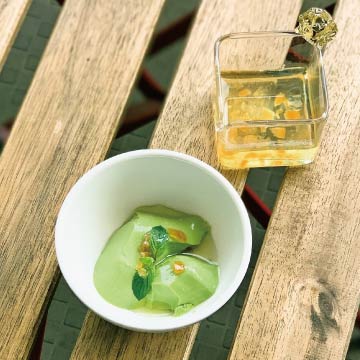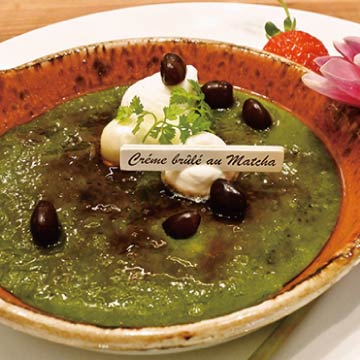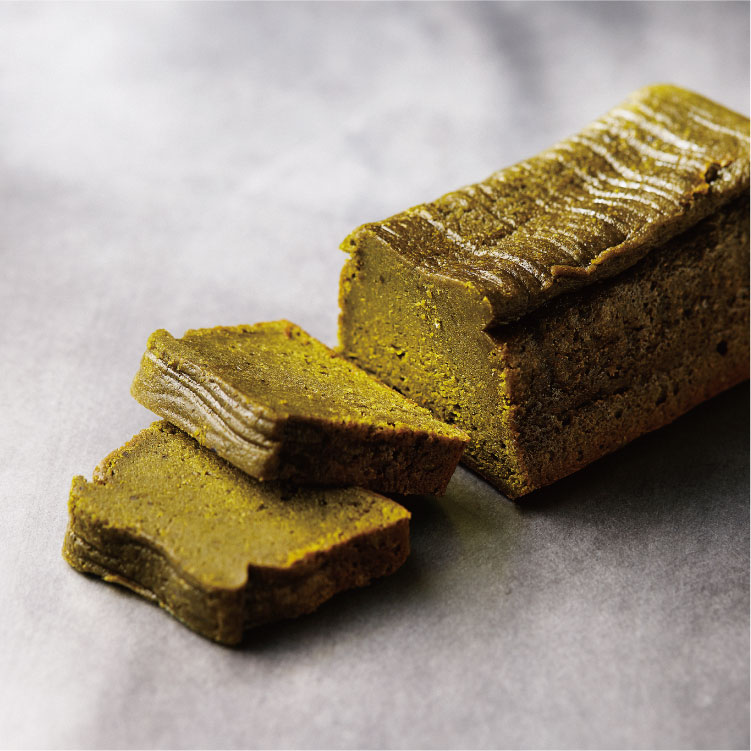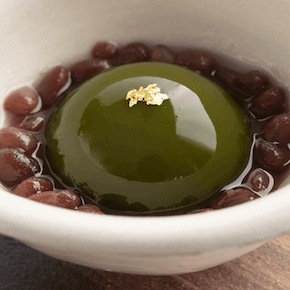News & Blogs
In this blog, we touch on diverse topics about Japanese food cultures, practices together with the culinary secret, TREHA®, and its important role in the Japanese food industry. We hope our blog helps you obtain in-depth knowledge of the secrets and science behind Japanese cuisine, shared from our kitchen, to yours.
Tea leaves that are meant to be matcha.
Matcha has become a worldwide boom in recent years because of its taste, health benefits, and beautiful bright green color. As you all know, matcha, or powdered green tea, is prepared by whisking with a small amount of hot water. We talk about this celebrated national drink boasting extended applications to foods and beverages.
Before we start, let us ask you. Do you know the difference between green tea and matcha?
Green tea refers to all unfermented teas. Oxidation of tea leaves progresses rapidly from the moment they are picked. Therefore, when making green tea, oxidation is stopped by treating the tea leaves at a high temperature. In other words, the tea leaves maintain the original beautiful green color since discoloration because oxidation does not occur.
The category of green tea is broadly divided into four; sencha (煎茶), gyokuro (玉露), tencha (碾茶), and kamairi cha (釜炒り茶). Sencha is probably the most prevalent green tea, prepared by pouring hot water into the tea leaves. Although matcha is undoubtedly a type of green tea, you can’t make matcha by powdering the ordinary green tea leaves purchased at a store because it employs an entirely different production method than the four types of tea mentioned above.
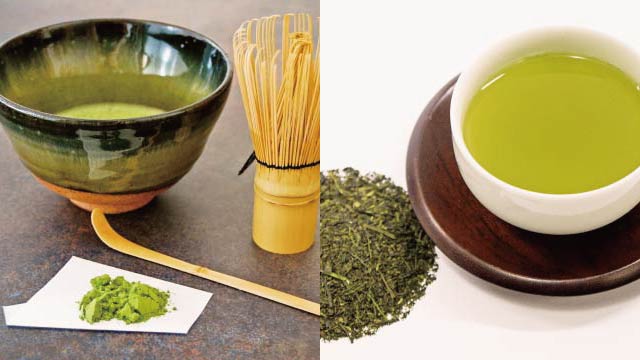
Matcha is made by grinding tencha (碾茶) tea leaves grown under a cloth covering to block the direct sunlight. This unique cultivating method preserves theanine, an amino acid packed with umami, which changes to catechin when exposed to the sun. Catechin is another prominent tea component responsible for an astringent and bitter taste. The tea leaves receiving special care are handpicked, dried, and ground to be matcha with fortified umami. This method is also used to grow the tea leaves of high-end green tea, gyokuro (玉露), except that it involves a hand-rolling process, unlike tencha (unground raw matcha).
Surprised? Only specially grown tea leaves are meant to be matcha. In a sense, matcha is a naturally born celebrity. On the other hand, a tea called "powdered green tea (粉末茶 funmatsu cha)" similar to matcha is ground ordinary tea leaves primarily made from sencha, which is directly dissolved in hot water to drink instead of infused in a teapot. Powdered green tea is often served at a rotating sushi restaurant.
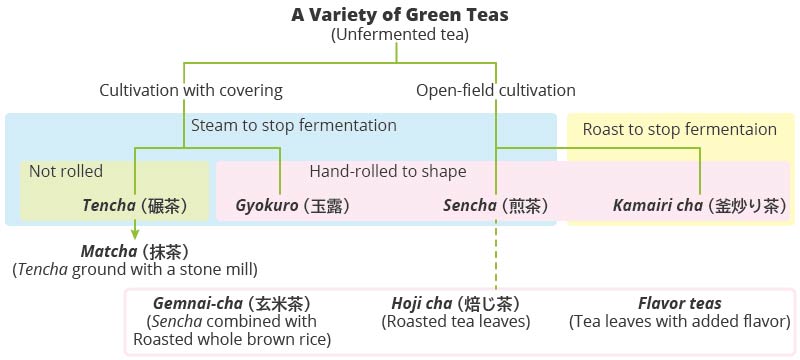
Matcha is compatible with sweets.
The culture of drinking tea supposedly had started around 2700 BC in China. Tea was brought in from China to Japan in the first half of the 9th century. The most well-known theory behind the prevalence of matcha in Japan was that Eisai (or Yosai), the founder of the Rinzai school of Zen Buddhism of Japan, brought back tea seeds, cultivation knowledge, and practice of tea ceremonies when he returned from China in 1191. Coincidentally, Priest Eisai was from Okayama prefecture, where TREHA® is produced!
Although some people don’t like traditional matcha drinks even in Japan, matcha-flavored foods, especially matcha sweets, are popular with men and women of all ages. Matcha sweets, found all year round in Japan, increase the variety at once, especially during the new tea season from spring to early summer when gyokuro and sencha from the new crop goes on sale. It is the most exciting season for sweet-toothed people as many items are available for a limited time.
Matcha is also used in Western sweets such as cakes and chocolates. The bittersweet matcha flavor goes well with Western confectionery. There are many popular products such as chocolates, cookies, and snacks featuring matcha flavors for a limited time. Some are produced by global snack manufacturers. Matcha is compatible with TREHA®, which brings out the flavor, maintaining the green color. Click here for White Chocolate Matcha Terrine recipe featuring a subtle sweetness, fudgy and smooth texture while retaining the volume after baking.
When it comes to a sweetened drink, it has been a while since matcha latte was a part of the regular menu at cafés. These days, matcha latte has become a popular bottled drink, featuring a pleasant contrast between moderate astringency and bitterness and the creamy dairy note with a hint of sweetness. The bottled latte is available at many vending machines in Japan, allowing the temperature options between hot or cold, which is another reason behind its popularity.
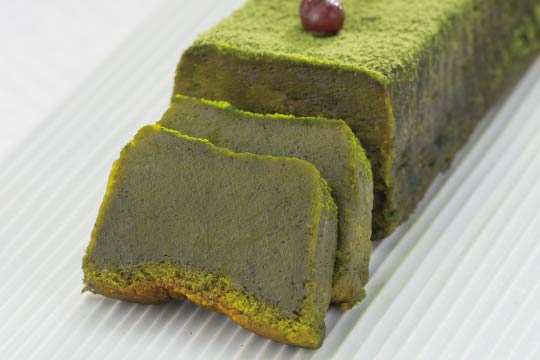
Wait, matcha is also compatible with savory food and drinks?!
Sweet latte isn't the only thing matcha is known for. An unsweetened bottled green tea containing matcha powder is as popular as a sweetened version. Even people who are not keen on traditional matcha drinks like the flavor depth created by a hint of matcha, which is supposedly a trade secret.
Matcha also takes on alcoholic beverages. You might know that a drink made of shochu liquor with soda is called “chuhai (酎ハイ),” an abbreviation of "shochu highball.” This soda cocktail, a staple at any izakayas in Japan, emerged in the 1980s as a substitute for highball made from whiskey, which had a high liquor tax. The name “chuhai got stuck after a major izakaya chain started using it.
Many izakaya restaurants offer "Matcha-High,” which is made of shochu liquor with matcha powder, besides good old "Oolong-High,” which is made of shochu with oolong tea or "Green tea-High,” which is made with ordinary green tea. In contrast with a matcha latte, featuring the complexity of creaminess, sweetness, and bitterness, matcha high is admired for its clean taste without sweetness. It is so popular that even canned "Matcha-High" made it to the shelves of liquor stores.
"Matcha salt (抹茶塩 Matcha jio),” which is a mixture of matcha and salt, is also often used primarily as tempura seasoning because the refreshing flavor and bitterness of matcha cut down a greasy, cloying mouthfeel. Recently, matcha salt is often accompanied by sushi and sashimi made with fatty fish.
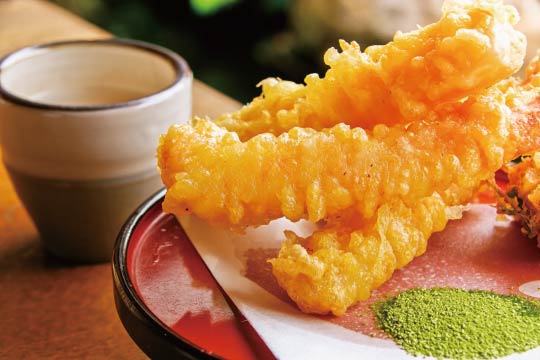
Ancient herbal medicine available for anyone.
Tea used to be extremely valuable when it was brought to Japan more than 1000 years ago, and only a limited number of people, such as monks and aristocrats, had access to it. Tea at this time was regarded as herbal medicine for healing.
As you might realize, this makes sense since tea contains various nutritional components. Notable nutrients are catechin, theanine, vitamin C, and caffeine. Catechin, a type of polyphenol, is a component of bitterness and astringency. Catechin is antioxidant and regulates blood sugar levels. Theanine is an amino acid responsible for the umami of tea. Theanine is becoming conspicuous due to its functionality to activate the parasympathetic nerves, which tells the brain to relax. Drinking tea helps to calm down the restlessness. Vitamin C, one of the most famous antioxidants, supports healthy skin and mucous membranes. It is well known that caffeine helps us focus and fights fatigue and drowsiness.
In general, any tea, not limited to green tea, is prepared through infusion. On the other hand, matcha is cultivated and processed in a specific method and consumed as a whole, allowing to intake all the nutrition of tea leaves and its dietary fiber.
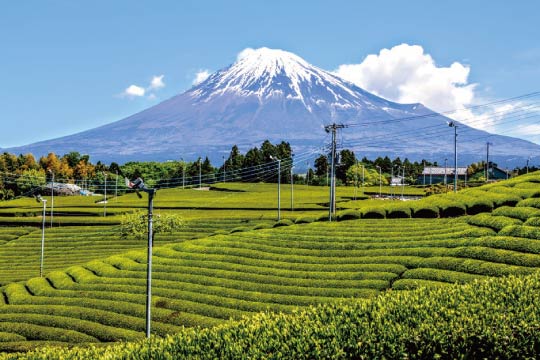
In the beginning, we mentioned that many matcha sweets hit the stores during the spring months when freshly harvested tea season, but did you know that the matcha season is officially autumn, from October to November?
Tencha, a raw material for matcha, is more flavorful after the aging period, about five months after being harvested, meaning October is a prime season right around the time the aging is completed. As seen in the article on Inoko mochi, it is customary that fresh matcha of the year is served with Inoko mochi when opening the winter hearth.
Please take this opportunity to try a bowl of traditional matcha green tea. We will dedicate the following blog to exploring the depth of the tea ceremony, a series of rituals for drinking matcha.
Did you find this blog interesting?
Please share it with your friends in the food service industry.
We regularly update the blog about the food culture of Japan, where TREHA® was discovered for culinary applications.
Click here and send us a message to subscribe.
Or hit us up on Instagram @trehalose_sensei!
You might also be interested in:
